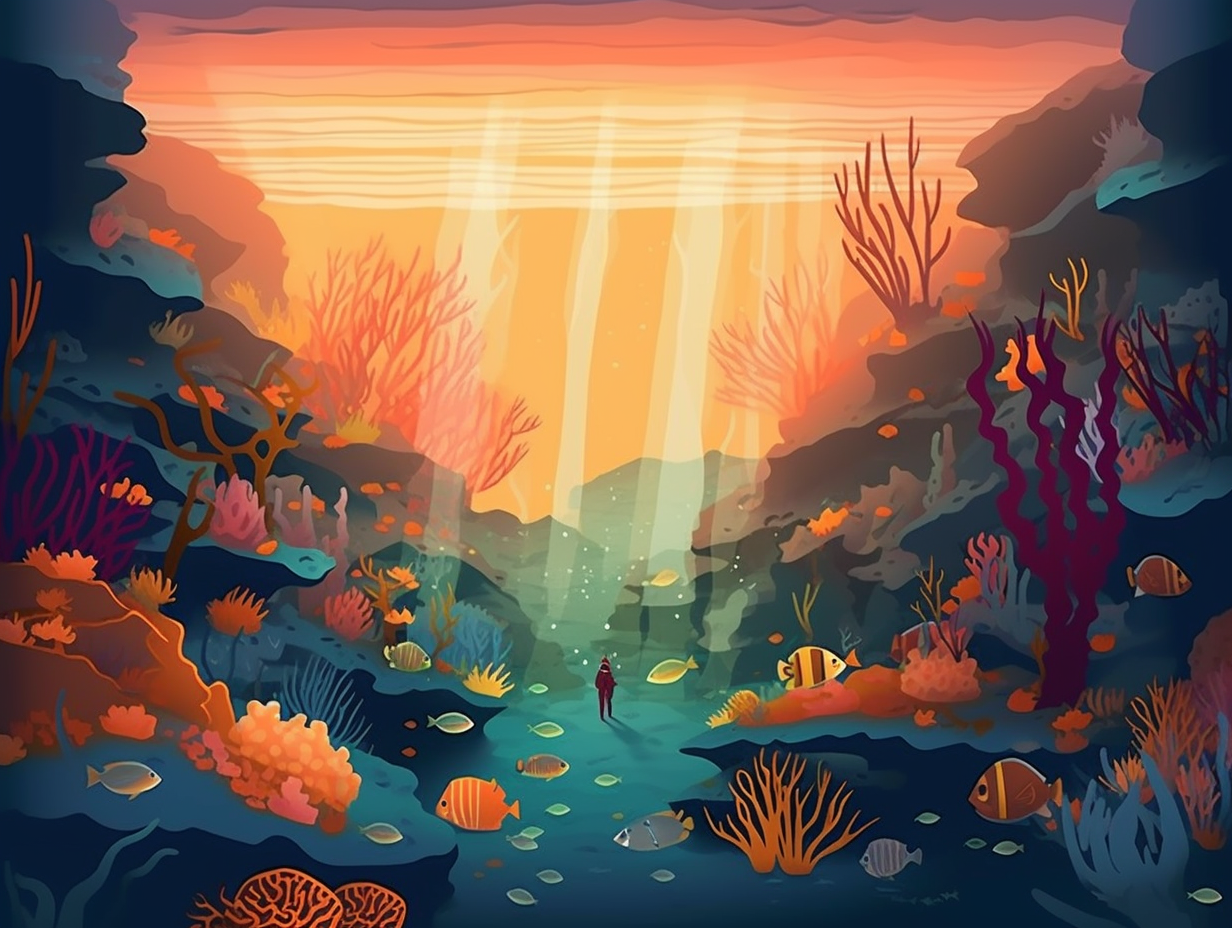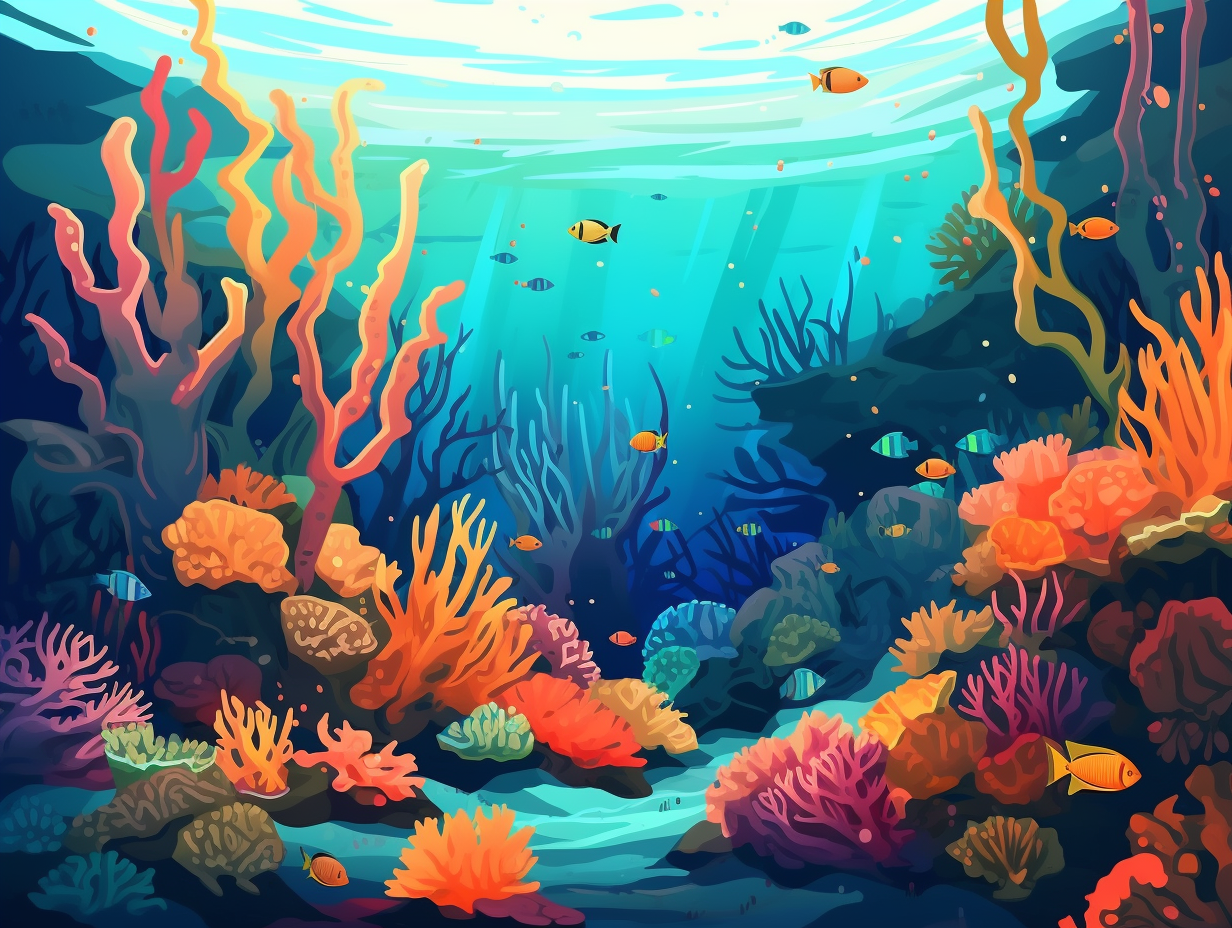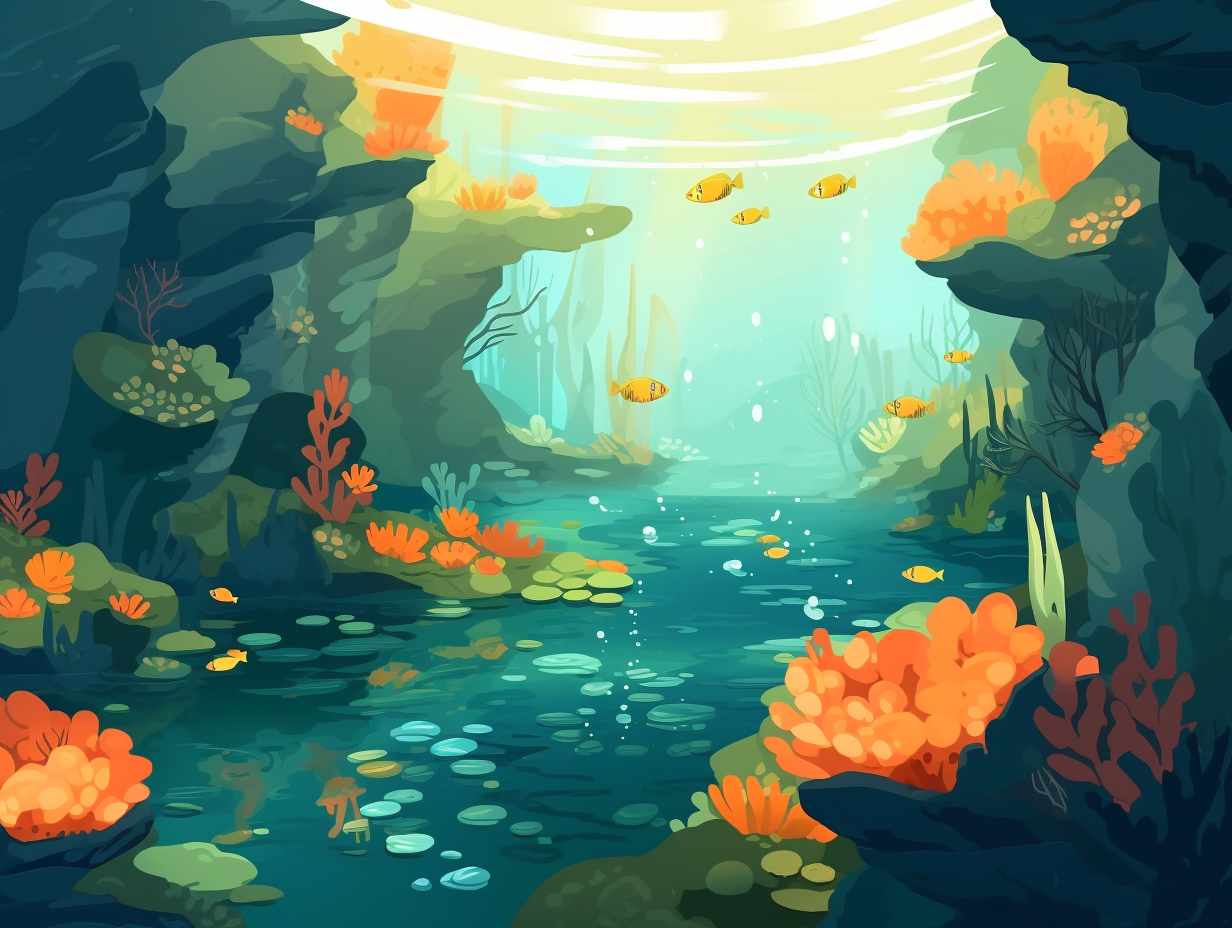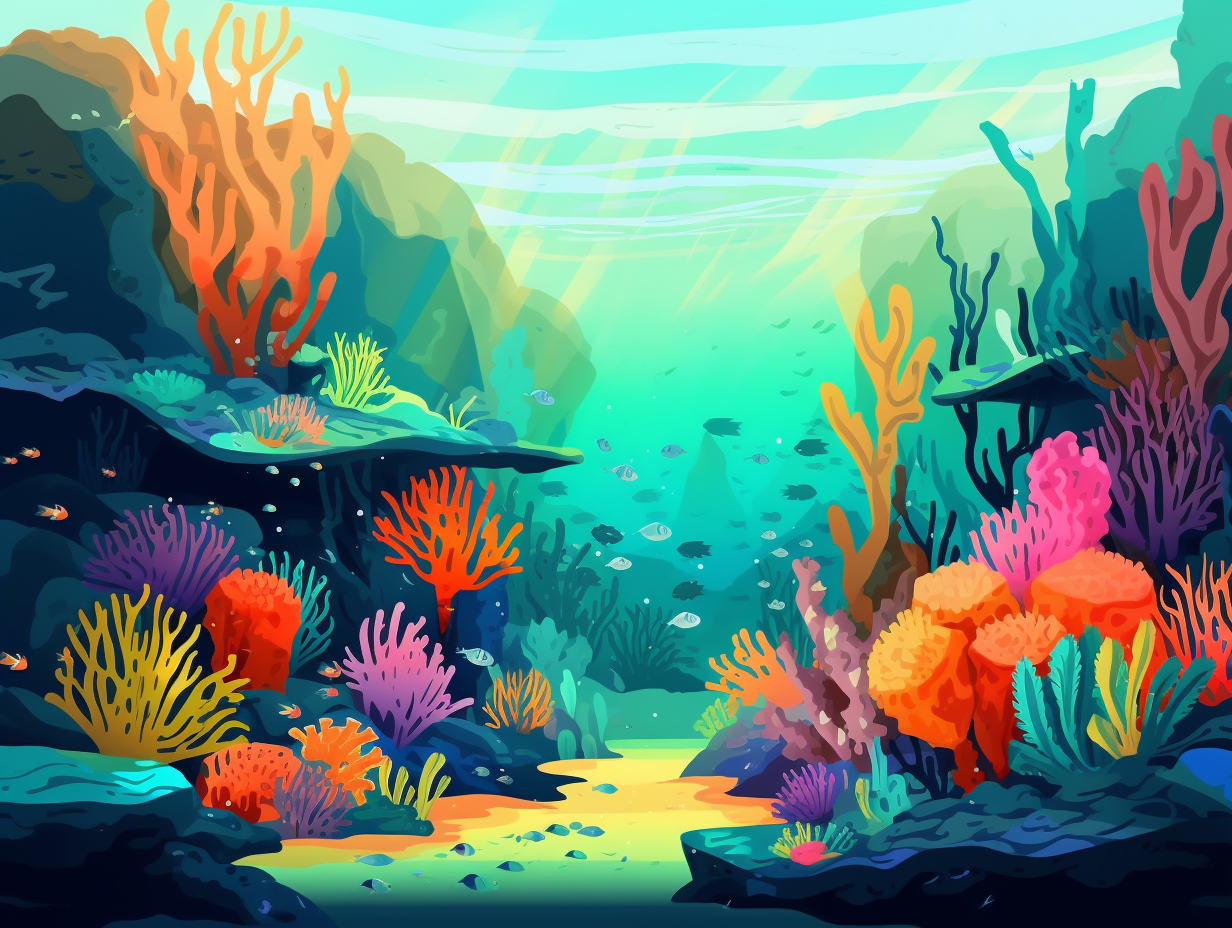Discover the Deep: 15 Fascinating Fun Facts About Seafloor Spreading You Didn't Know

1. Magnetic Soap Opera
In a plot twist straight out of a magnetic soap opera, the Earth's ocean floors are the proud hosts of stripes that reveal its ever-changing dynamism: Seafloor spreading leads to the formation of magnetic stripes on the ocean floor, as the basaltic rocks that form new crust at mid-ocean ridges record the Earth's magnetic field polarity at the time of their formation, offering strong evidence for plate tectonics.
Source => oceanexplorer.noaa.gov
2. Aquaman's Red Carpet Event
Who knew that Aquaman's kingdom would have a never-ending red carpet event: Mid-ocean ridges are Earth's longest and largest mountain range, stretching nearly 65,000 kilometers (40,390 miles), with over 90% of it lying underwater, formed by seafloor spreading as tectonic plates move apart and create unique underwater ecosystems.
Source => oceanexplorer.noaa.gov

Did you know that tectonic plates shape our planet's most breathtaking landscapes? Discover the connection between these geological giants and the formation of mountains, oceans, and more! 🌋🏔️🌊
=> Fun Facts about Tectonic-Plates
3. Underground Ocean Ridge Parties
They say "what lies beneath" is a mystery, and mid-ocean ridges have taken that quite literally with their underground parties featuring magma, new crust, and some crustacean guests: Seafloor spreading takes place at these mid-ocean ridges where tectonic plates move apart, allowing magma to rise and cool, forming new oceanic crust that becomes older and denser as it drifts away from the ridge, giving birth to underwater mountains and cliffs.
Source => nationalgeographic.org
4. Underwater Supervillains' Weapon
If you thought your precious little land-locked toes were safe from the menace of underwater supervillains, think again – they've got a sneaky geological weapon on their side: Seafloor spreading at mid-ocean ridges creates new oceanic crust by diverging tectonic plates, making landmasses drift apart while magma chills out to form new seabed at a rate of 2-18 cm per year, possible of forming an Atlantic Ocean-sized crust in a mere million years!
Source => letstalkscience.ca

5. East Pacific Rise Hot Gossip
You know what they say about the East Pacific Rise: it's spreading faster than gossip at a small-town social gathering! No, really: This mid-ocean ridge boasts a plate movement rate of up to 5.6 inches (142 mm) per year, making it a hotspot for geologists studying the fascinating world of seafloor spreading.
Source => volcano.oregonstate.edu
6. Seabed Elevation Makeover
Who needs a red carpet when you have mountains forming right beneath you on the ocean floor? That's right, the seabed is definitely getting an "elevation": During seafloor spreading, less-dense material rises to create elevated areas on the seafloor, as hot magma fueled by mantle convection bubbles up to fill fractures and spill onto the crust, cooling down and solidifying into igneous rock such as basalt, ultimately forming a brand-new part of Earth's crust.
Source => nationalgeographic.org
7. Raves Beneath the Waves
From raves beneath the waves to shrimp's mineral flip: The deep ocean floor hosts a secret party, with giant tube worms super-sizing and crabs breakdancing by the hydrothermal vents. Along the mid-ocean ridge system, which stretches over 65,000 kilometers (40,390 miles), these hotspots spew out a mineral-rich bonanza of superheated water, creating exclusive underwater oases for the crème de la crème of deep-sea dwellers.
Source => oceanexplorer.noaa.gov
8. Continental Plumber Antics
Ahoy, mateys! Ever thought of a mid-ocean ridge as a sort of "continental plumber", futzing with sea levels as casually as a capricious god playing with a bathtub plug? Well, yarr better stand corrected: Seafloor spreading at these ridges contributes to fluctuations in sea levels as oceanic crust cools and sinks, effectively increasing the ocean basin's volume and lowering sea levels. This geological oddity has left its mark on Earth's history, with the Pacific Ocean taking the proverbial plunge by a staggering 80 million years due to a slowdown in seafloor spreading and adjustments in the mid-ocean ridge system.
Source => nationalgeographic.org
9. Ocean's Sneaky Growth Spurt
Ever felt like the ocean is getting bigger on you, and it's not because you ate too much at the buffet? Astoundingly, it's due to something called seafloor spreading: a geological phenomenon where oceanic crust cools, sinks, and increases the volume of the ocean basin, causing a decrease in sea level over time, as observed in the Pacific Ocean's less extensive mid-ocean ridge system over the past 80 million years.
Source => nationalgeographic.org

10. Earth's Tetris Game
Just like a never-ending game of Tetris where Earth is the player: Seafloor spreading constantly generates new crust at mid-ocean ridges, while subduction wipes out the old crust at plate boundaries, ultimately balancing each other and maintaining the Earth's diameter in check.
Source => nationalgeographic.org
11. Mother Nature's Oceanic Face-lift
Ever heard of Mother Nature's oceanic face-lift? Yep, she’s working on a continuous youth treatment down there, keeping her floors fresh and fabulous: Seafloor spreading constantly creates new oceanic crust at mid-ocean ridges, replacing crust older than 200 million years that has been recycled through subduction zones, playing a significant role in plate tectonics and the movement of continents.
Source => oceanexplorer.noaa.gov
12. Rift Valley Party Showdown
If Mid-Atlantic Ridge and East Pacific Rise were to throw a party, they'd have a rift-ing good time: the Mid-Atlantic Ridge spreads at 2 to 5 centimeters per year, forming a rift valley as deep and wide as the Grand Canyon, while the East Pacific Rise spreads quickly at 6 to 16 centimeters per year, flaunting a smooth volcanic summit and a petite crack along the crest, all thanks to the varying speeds of seafloor spreading shaping their distinctive physiques.
Source => oceanexplorer.noaa.gov
13. Swiper's Magnetic Receipts
Swiper the Fox had nothing on Earth's magnetic field: it's been swapping poles throughout history, and we know just where to find the receipts. On the ocean floor, magnetic stripes reveal that basalt rock formed at mid-oceanic ridges, aligning iron minerals in a way that records the polarity at the time of formation, providing evidence for seafloor spreading and plate tectonics.
Source => oceanexplorer.noaa.gov
14. Seafloor's MTV Cribs
In a seafloor edition of "MTV Cribs," the Lost City Hydrothermal Field would be the envy of all underwater life, complete with alkaline hydrothermal vents and a unique blend of exclusive microbes and invertebrates: This hotspot resides in the Atlantic Ocean, providing a key location to study how life on our dear planet began, thanks to ultramafic-hosted serpentinization producing molecules like hydrogen and methane – separate from the seafloor spreading action that uncovers the Earth's hidden marine gems through normal faults.
Source => en.wikipedia.org

15. Earth's Cha-Cha Balancing Act
Ever wonder how the Earth maintains a balanced diet? (hint: it's not by doing the Cha-cha!) Well, stay glued, because Antarctica has an eccentric dining secret: Seafloor spreading! A geophysical buffet near Cape Adare is helping scientists understand the tectonic dance moves of East and West Antarctica and link Pacific plate movements to the rest of the world. This exploration offers invaluable insight into the Earth's geological groove that will keep you shimmying all day long.
Source => nsf.gov
Related Fun Facts




















